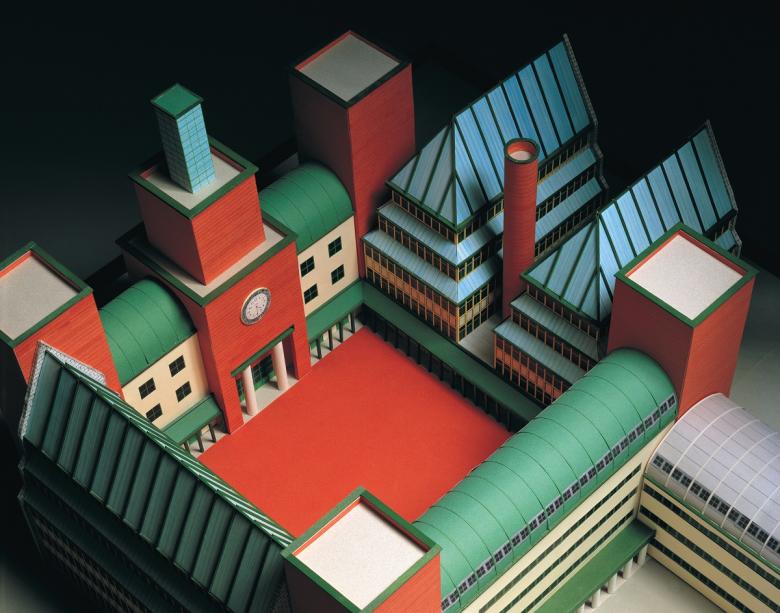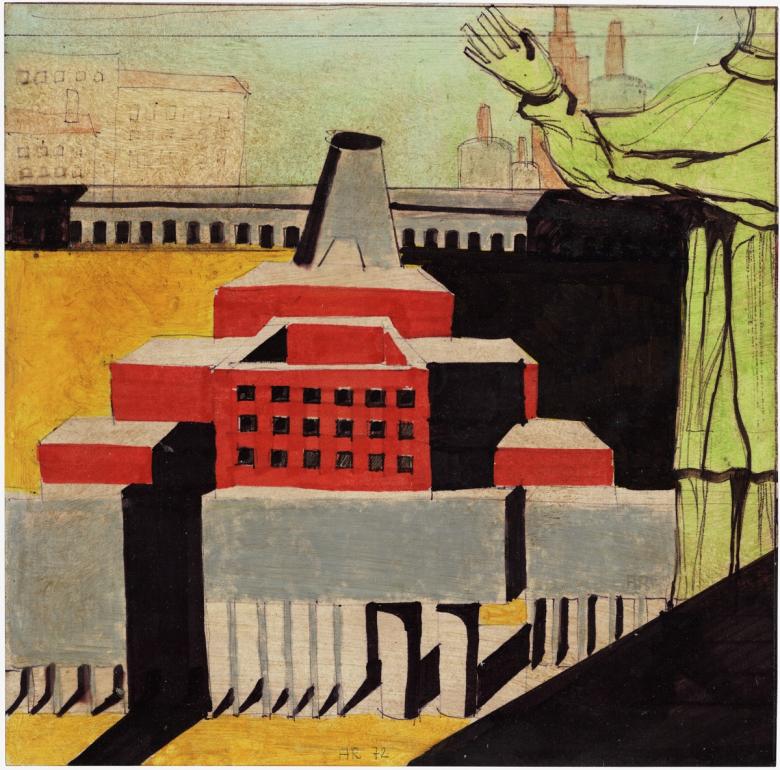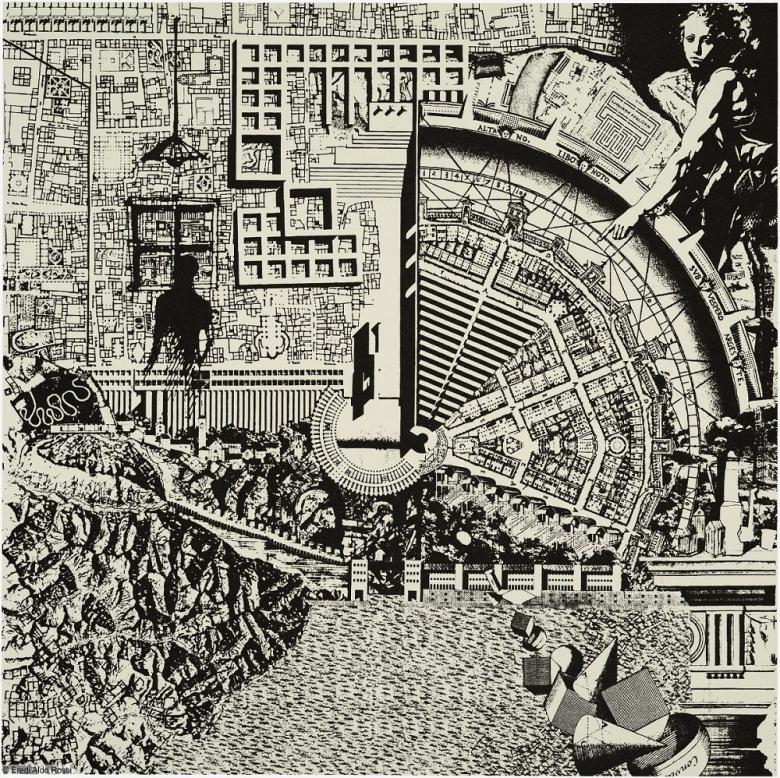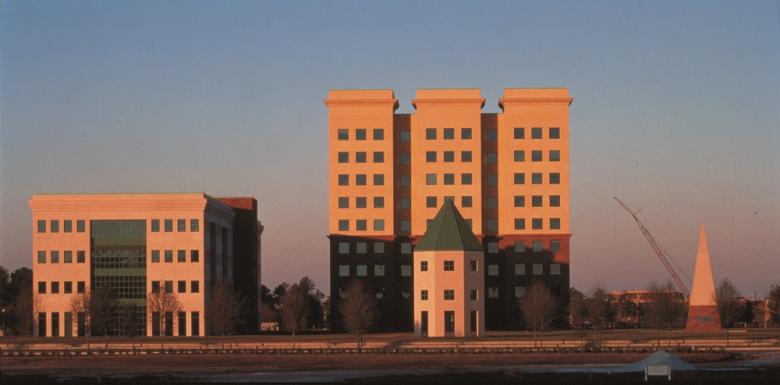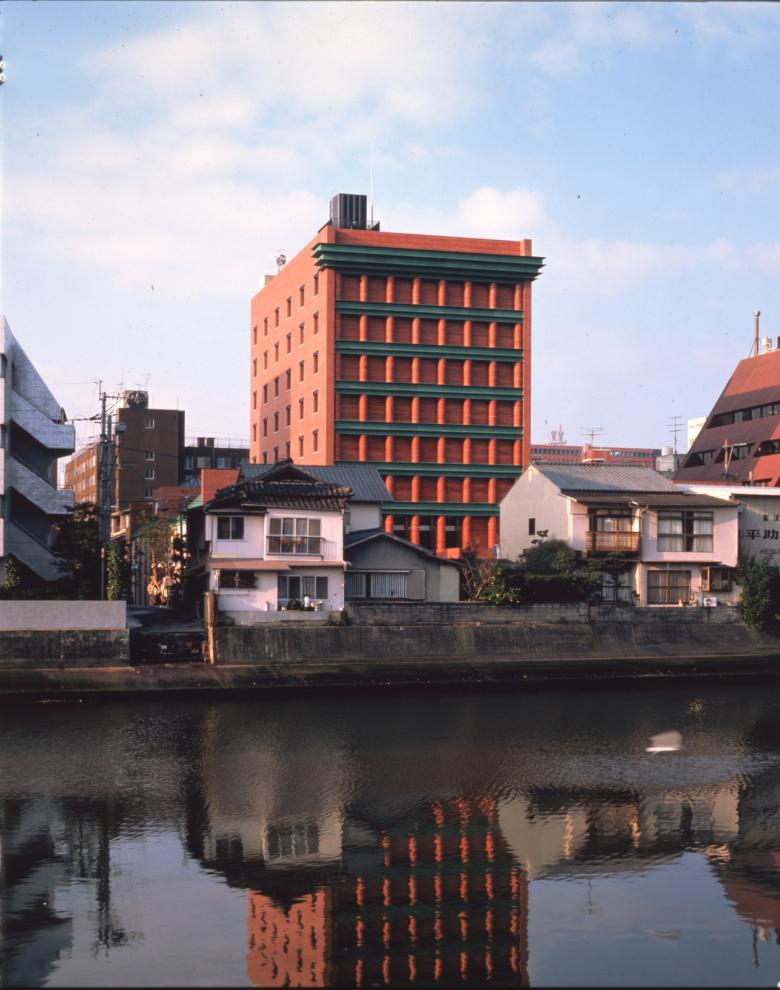The Architect and the Cities; or, Reduced to the MAXXI
Aldo Rossi: The Architect and the Cities is a major retrospective opening on March 10 at MAXXI, the National Museum of 21st Century Arts in Rome. The exhibition explores the architecture and theories of Italy’s “unusual architect.”
To say that “Rossi enjoyed fame in Italian architecture” is an understatement. Aldo Rossi was Italian architecture; in the 1980s he owned it, both intellectually and artistically. But it is with this humble description that MAXXI, Rome’s premiere museum for contemporary art, advertises the major exhibition celebrating the Italian master of postmodern architecture. Not only did Rossi’s theories and buildings change the course of architecture, his distinct de Chirico-like drawings and his product designs sold all over the world became icons of style.
More than 800 drawings, photographs, models, and other documents were assembled for the new exhibition taking place 23 years after Rossi’s untimely death in a car accident. The exhibition aims to go beyond its main subject and also “reflect on Italian architecture in the second half of the twentieth century.” That period seems like an overly rich era for Italian design compared to today, when — if not for Renzo Piano and Stefano Boeri — architectural design “made in Italy” has lost its luster. The exhibition presents items from Rossi's archive in the MAXXI Architettura Collection combined with objects from the Fondazione Aldo Rossi and major museums in Venice, Frankfurt, and Maastricht; the last two indicate that, outside Italy, Rossi’s work blossomed in Germany and the Netherlands.
Rossi shot to fame and built his international career in about ten years, starting in 1971. The common denominator of Rossi’s accomplishments is his “reading of cities”: their past and present; their visible and hidden parts, like in a palimpsest. After Modernism became vulgar in the 1960s — ignorant towards any notion of place, let alone a genius loci — Rossi discovered the value of urban forms at all scales, from urban planning to the design of an espresso maker. The similarities of Rossi’s designs at these ends of the scale are impressively illustrated in the exhibition by means of his colorful drawings, in which oversized everyday objects reveal the same design principles as architectural and large urban forms. While Rossi’s insistence on “cultural reconstruction” and his refusal of postwar modernity may seem today, in retrospect, (neo)conservative and a perfect fit for the era of Reagan and Thatcher, Rossi actually considered himself as a communist.
The monographic exhibition starts in a central space with a presentation of materials that contributed to the formation of Rossi’s practice, revealing a complex personality with diverse interests and relationships. At either ends of the gallery, displays are dedicated to his most significant projects in Italy, such as the Head Office of Fontivegge in Perugia. Along the main gallery, in a jagged and crowded spine that resembles the fabric of traditional cities, are more than 40 models, including the Città Analoga, which is revealed fully in a large drawing two meters square. These intellectual fragments establish a relationship with Rossi’s design works, as “Rossi’s narratives, both poetic and realistic, converge,” in the words of curator Alberto Ferlenga. The ten-year-old MAXXI museum, designed in Zaha Hadid’s recognizable style, is of course a contrasting backdrop to Rossi’s bold and bright designs that sometimes border on the childish.
A spectacular series of models creates an “imaginary city” suitable for the web of ideas, images, places, identities, and memories that Rossi’s oeuvre revolved around. Rossi saw “drawing as independent research.” In turn, two display cases house Rossi’s Quaderni azzurri (blue notebooks) that reflect the paths his thoughts took. The MAXXI exhibition finishes with the Piroscafo bookshop, which Rossi designed with Luca Meda, and a video gallery with interviews and documentaries about Rossi.
Rossi achieved international recognition as the leading exponent of L'architettura della città (“The Architecture of the City”), the title he chose for his groundbreaking publication of 1966. His prior experiences as editor of Casabella magazine and teaching architectural design first in Arezzo, then Venice and finally in his home town of Milan helped him communicate architecture in ways that would fascinate the general public without boring his peers. But to solely be a mediator without a built oeuvre was not his agenda. So, when Carlo Aymonino designed the famous Gallaratese housing block in Milan with Rossi, it quickly became a built manifesto for both architects’ convictions. The linear arcades of the building recalled Milan’s galleries, giving the residential district an urban archetype not seen before. Rossi’s second design, the stark red box for the columbarium at San Cataldo Cemetery in Modena, completed in 1971, also hit the Zeitgeist as an archaic "city of the dead."
Soon after Rossi married Swiss actress Sonia Gessner and moved to Zurich to teach at the ETH, his academic opportunities multiplied. He soon became a sought-after educator outside Europe, teaching at the Cooper Union in New York and Cornell in Ithaca. Soon, international commissions started to come in: the apartment block near Checkpoint Charlie in Berlin, which he fashioned in red, white, and green (the Italian Tricolore); a house in Pennsylvania’s Pocono Mountains; the Bonnefanten Museum in Maastricht; and the Palace Hotel in Fukuoka in Western Japan, among others. In the 1990s, Japan and the United States had acquired a taste for Italian PoMo design, with their economic booms leading to a rush of commissions, such as the Walt Disney building in Orlando, Florida, and the Mojiko Hotel in Kitakyushu, Japan.
In 1990, Rossi became the first Italian architect to receive the prestigious Pritzker Architecture Prize. Before that he directed the Venice Architecture Biennale — twice. In his home country, however, it is two theatre projects that are among Rossi’s most memorable projects: the renovation of the Teatro Carlo Felice in Genoa (1984, with Ignazio Gardella) and of course the Teatro La Fenice in Venice which reopened in 2004, seven years after Rossi’s death.
In Rossi’s understanding, cities shared common values “constructed over time” and their buildings were archetypal “artifacts that withstand time.” Cities “remember their own past” as a "collective memory" but also that of a whole nation, if not mankind altogether — a notion that the ahistorical Late International Style did not acknowledge and which Rossi helped to overcome. Rossi was not shy to let his monumental buildings give structure to a city. But as Rossi’s body of built work expanded, it ultimately stepped into the same trap he witnessed with Modernism: it become an interchangeable image — if not a brand — that would work just as well in Florida as it would in a boring Japanese tourist town.
